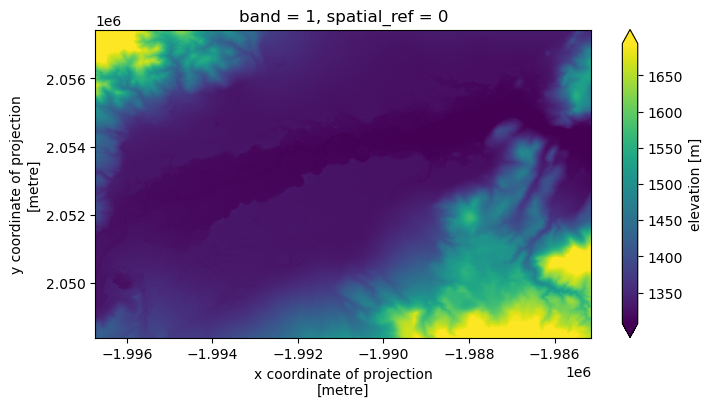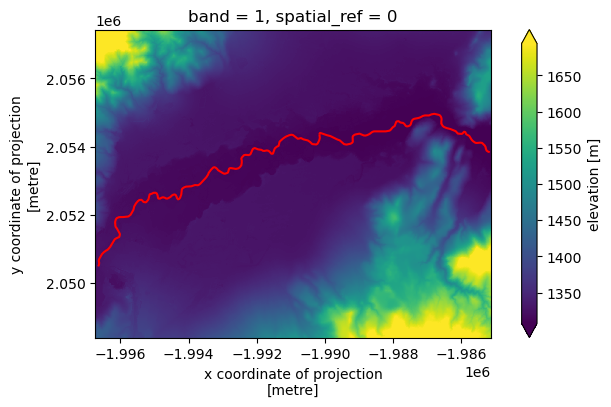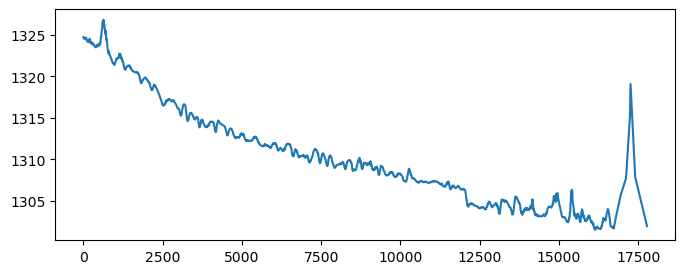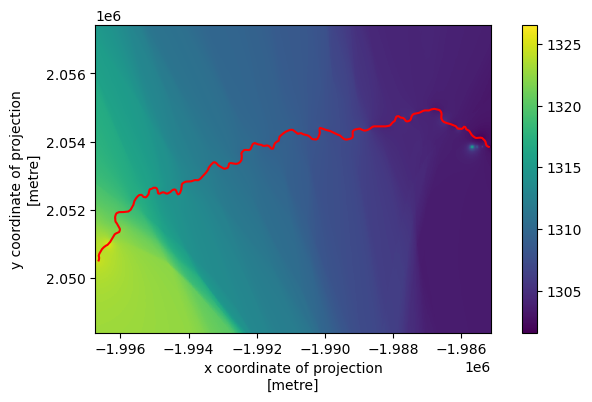This page was generated from rem.ipynb.
Interactive online version:
Relative Elevation Model#
This tutorial is inspired by this blog post, this excellent story map, and this notebook.
[1]:
from __future__ import annotations
from pathlib import Path
import matplotlib.pyplot as plt
import numpy as np
import opt_einsum as oe
import rasterio
import shapely
import xarray as xr
import xrspatial as xs
from datashader import transfer_functions as tf
from datashader import utils as ds_utils
from datashader.colors import Greys9, inferno
from scipy.spatial import KDTree
from shapely import ops
import py3dep
import pygeoutils as geoutils
import pynhd
Relative Elevation Model (REM) detrends a DEM based on the water surface of a stream. It’s especially useful for visualization of floodplains. We’re going to compute REM for a segment of Carson River and visualize the results using xarray-spatial and datashader.
First, let’s check out the available DEM resolutions in our area of interest (AOI).
[2]:
bbox = (-119.59, 39.24, -119.47, 39.30)
dem_res = py3dep.check_3dep_availability(bbox)
dem_res
[2]:
{'1m': True,
'3m': False,
'5m': False,
'10m': True,
'30m': True,
'60m': False,
'topobathy': False}
We can see that Lidar (1-m), 10-m, and 30-m are available. Obviously, Lidar data gives us the best results, but it can be computationally expensive. So, we’re going to set the resolution to 10 m.
[3]:
res = 10
dem = py3dep.get_dem(bbox, res)
fig, ax = plt.subplots(figsize=(8, 4), dpi=100)
_ = dem.plot(ax=ax, robust=True)

Next, we need to get the river’s centerline. For this purpose, first we get the flowlines within our AOI. Then, we remove all the isolated flowlines using the remove_isolated flag of pynhd.prepare_nhdplus and find the main flowline based on the minimum value of the levelpathi attribute.
[4]:
wd = pynhd.WaterData("nhdflowline_network")
flw = wd.bybox(bbox)
flw = pynhd.prepare_nhdplus(flw, 0, 0, 0, remove_isolated=True)
flw = flw[flw.levelpathi == flw.levelpathi.min()].to_crs(dem.rio.crs).copy()
fig, ax = plt.subplots(figsize=(8, 4), dpi=100)
flw.plot(ax=ax, color="r")
_ = dem.plot(ax=ax, robust=True)

Now, we can get the elevation profile along the obtained main flowline with spacing of 10 meters. FOr this purpose, first, we we use PyGeoUtils to smooth the river flowline at 10 m spacing. Then, we use the smoothed flowline to get the elevation profile from USGS’s 10-m DEM. PyGeoUtils has a function for efficiently sampling a raster file at points for a give window size (5 by default) and resampling method (bilinear by default).
[5]:
river_line = ops.linemerge(flw.geometry.tolist())
npts = int(np.ceil(river_line.length / 10))
river_line = geoutils.smooth_linestring(river_line, 0.1, npts)
url = "https://prd-tnm.s3.amazonaws.com/StagedProducts/Elevation/13/TIFF/USGS_Seamless_DEM_13.vrt"
with rasterio.open(url) as src:
xy = shapely.get_coordinates(geoutils.geo_transform(river_line, flw.crs, src.crs))
z = np.ravel(list(geoutils.sample_window(src, xy)))
river_elev = np.c_[shapely.get_coordinates(river_line), z]
distances = shapely.line_locate_point(river_line, shapely.points(river_line.coords))
plt.figure(figsize=(8, 3), dpi=100)
_ = plt.plot(distances, river_elev[:, 2])

There are several methods for detrending the DEM based on the river’s elevation profile. You can check these method in this poster. Here, we’re going to use Inverse Distance Weighting method using scipy’s KDTree function and setting the number of neighbors to 200.
[6]:
distances, idxs = KDTree(river_elev[:, :2]).query(
np.dstack(np.meshgrid(dem.x, dem.y)).reshape(-1, 2),
k=200,
workers=-1,
)
w = np.reciprocal(np.power(distances, 2) + np.isclose(distances, 0))
w_sum = np.sum(w, axis=1)
w_norm = oe.contract("ij,i->ij", w, np.reciprocal(w_sum + np.isclose(w_sum, 0)), optimize="optimal")
elevation = oe.contract("ij,ij->i", w_norm, river_elev[idxs, 2], optimize="optimal")
elevation = elevation.reshape((dem.sizes["y"], dem.sizes["x"]))
elevation = xr.DataArray(elevation, dims=("y", "x"), coords={"x": dem.x, "y": dem.y})
rem = dem - elevation
fig, ax = plt.subplots(figsize=(8, 4), dpi=100)
elevation.plot(ax=ax)
_ = flw.plot(ax=ax, color="red")

Let’s use datashader to stack DEM, Hillshade and REM for a nice visualization. There are a couple of parameters in this tutorial that can be change for extending it to other regions: Number of neighbors in IDW, DEM resolution, span argument of REM’s shading operation.
[7]:
illuminated = xs.hillshade(dem, angle_altitude=10, azimuth=90)
tf.Image.border = 0
img = tf.stack(
tf.shade(dem, cmap=Greys9, how="linear"),
tf.shade(illuminated, cmap=["black", "white"], how="linear", alpha=180),
tf.shade(rem, cmap=inferno[::-1], span=[0, 7], how="log", alpha=200),
)
ds_utils.export_image(img[::-1], Path("_static", "rem").as_posix())
[7]: